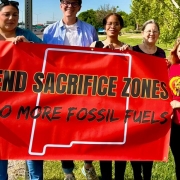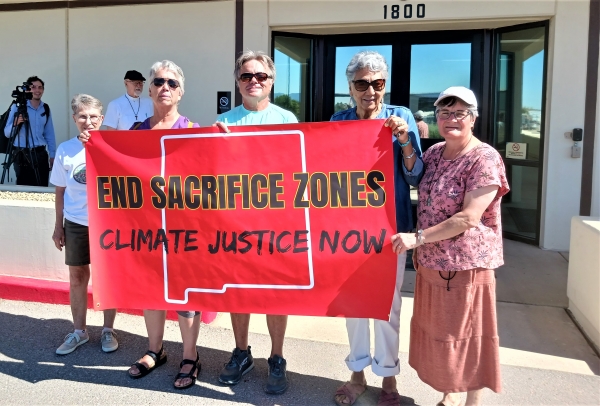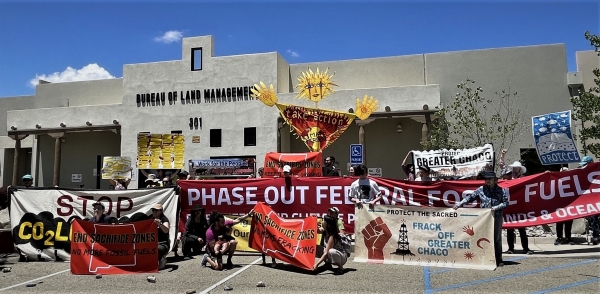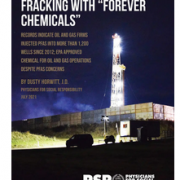Broad Coalition in New Mexico Calls on BLM to End to Sacrifice Zones
We are shocked and dismayed that in spite of a clear scientific, political, and public consensus that action for the climate requires we begin to phase out fossil fuels, the BLM is continuing the legacy of sacrifice zones in New Mexico by moving forward with the auction of additional public and ancestral lands to more oil and gas leasing and drilling.
Last week, groups rallied at the Bureau of Land Management field offices in Farmington, Carlsbad, Las Cruces, Albuquerque, and Santa Fe calling on the BLM to cancel the May 25 oil and gas lease sale of nearly 10K acres of public lands in New Mexico and Kansas administered by the BLM New Mexico State Office.
President Biden promised to end new oil and gas leasing on public lands. We would like this promise to be honored. The federal government, including the President himself, has a moral and ethical imperative to confront the climate crisis. The latest Intergovernmental Panel on Climate Change (IPCC) report reveals that our window to address catastrophic impacts is narrowing. Quick action is required to phase out fossil fuels and BLM must play a leadership role in addressing greenhouse gas emissions from extraction in New Mexico’s Permian Basin and
Greater Chaco regions which contribute to worldwide warming.
Ongoing Campaign
PLEASE RE-TWEET:
SAMPLE FACEBOOK/INSTAGRAM POST:
It’s shocking that in spite of clear scientific, political, and public consensus that action for the climate requires phasing out of fossil fuels immediately, the Bureau of Land Management New Mexico state office auctioned-off more public and ancestral lands to oil and gas drilling —perpetuating the legacy of sacrifice zones. It’s time to end the era of fossil fuels and sacrifice zones. Over 270 groups from across the country added their voice to a letter calling on the agency to cancel the May 25 oil and gas lease sale. <link to a graphic/video/PR>
#EndSacrificeZones
#EndFossilFuels
#ClimateJusticeNow
Carlsbad Current-Argus: Protests rally ahead of federal oil and gas lease sale in southeast New Mexico
EE News Energywire: Biden’s contentious N.M. oil sale earns almost $80M
KWRG: Local environmental groups speak out against BLM oil and gas lease sale
E&E News Greenwire: Biden urged to cancel N.M. lease sale
Carlsbad Current-Argus: Oil and gas sale nets $79M. New Mexico Environmental groups fear climate impacts.
Thanks to Miya King-Flaherty of WildEarth Guardians for supplying the text for this post.
Organizing Committee
Chaco Coalition, Citizens Caring for the Future, Center for Biological Diversity, Friends of the Earth, Interfaith Power and Light, New Mexico Climate Justice, Permian Basin Climate Justice Coalition, Pueblo Action Alliance Sierra Club, WildEarth Guardians, Western Environmental Law Center.




